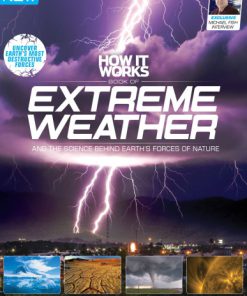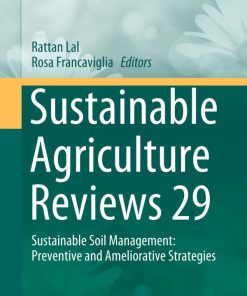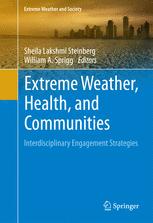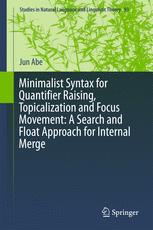Detector Dogs and Scent Movement How Weather Terrain and Vegetation Influence Search Strategies 1st Edition by Tom Osterkamp 036707429X 9780367074296
$50.00 Original price was: $50.00.$25.00Current price is: $25.00.
Detector Dogs and Scent Movement-How Weather, Terrain, and Vegetation Influence Search Strategies 1st Edition by Tom Osterkamp – Ebook PDF Instant Download/DeliveryISBN: 036707429X, 9780367074296
Full download Detector Dogs and Scent Movement-How Weather, Terrain, and Vegetation Influence Search Strategies 1st Edition after payment.
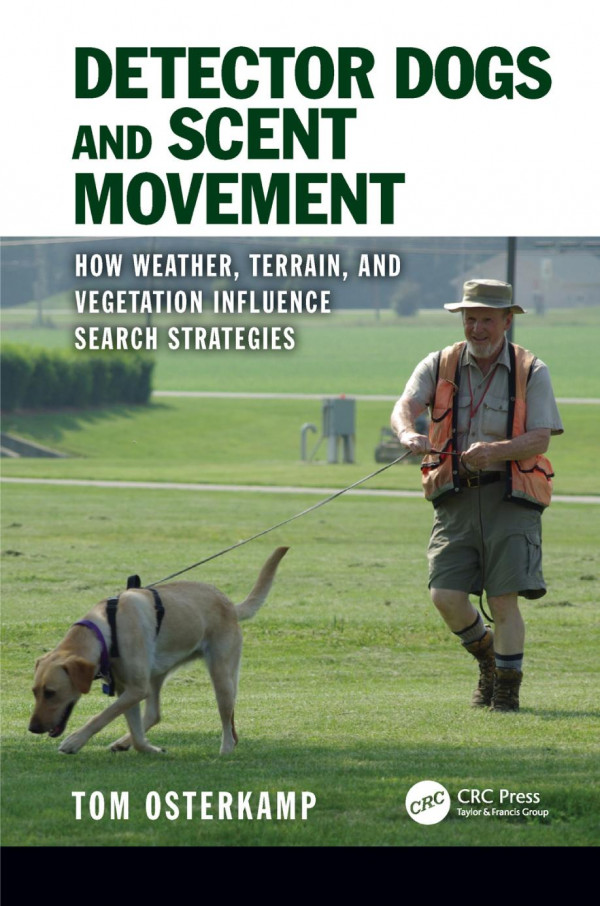
Product details:
ISBN-10 : 036707429X
ISBN-13 : 9780367074296
Author: Tom Osterkamp
Dogs detect scent from a source that is carried to them in a plume by the wind. The most important tool for a detector dog handler to have on searches is a knowledge of scent plume movement or “scent dynamics” (the science of scent movement). Such knowledge resides primarily in scientific journals that are largely inaccessible to detector dog handlers and written in language that is difficult to understand. Detector Dogs and the Science of Scent Movement: A Handler’s Guide to Environments and Procedures retrieves, reviews, and interprets the results of pertinent scientific research on scent dynamics and presents these results in terms that are easier for handlers to understand. Information on the physiology of the dog’s nose, their sense of smell, and the properties of scent provide the essential information on the process of scenting. The composition of training aids for explosives, narcotics, human remains and other sources is discussed. Recommendations are made on the use of training aids, their placement during training, and the resulting availability of scent. Potential problems and handler errors in the use of training aids are also examined. The characteristics of scent plumes and how wind influences their movement are a key focus of the book. The primary task for the handler is to get the dog into the scent plume so that the dog can detect the scent and follow it to the source the handler seeks. As such, a knowledge of scent and scent plume movement will vastly improve the ability of the handler to accomplish this task. The influence of weather and physical settings such as terrain, vegetation, ground cover, soil and water on scent movement are examined in detail. Strategies for searching, detecting, and locating sources in all physical settings are presented. Specific effects associated with hills and mountains, fields and forests, bare soils and soils covered by vegetation, different soil types, and lakes and rivers are examined in detail. This includes specific recommendations are made about weather and physical settings that result in higher probability of success on searches. Detector Dogs and the Science of Scent Movement will be a vital resource for K9 handles in the private and public sectors—including in Homeland Security, law enforcement, and military settings—as well as a useful guide for lawyers, forensic, and investigative professionals who need to better understand K9 operations.
Detector Dogs and Scent Movement-How Weather, Terrain, and Vegetation Influence Search Strategies 1st Table of contents:
1 Introduction
1.1 History
1.2 Purpose
1.3 Terminology
1.4 Using Search Dogs
2 The Dog’s Nose and Scent
2.1 Sense of Smell
2.1.1 Physiology and Function
2.2 Scent
2.2.1 Properties
2.2.2 Surfaces
2.2.3 Residual Scent
2.3 Training Aids
2.3.1 Explosives
2.3.2 Drugs
2.3.3 Human Scent
2.3.3.1 Decomposition
2.3.3.1.1 Autolysis
2.3.3.1.2 Putrefaction
2.3.3.1.3 Liquefaction and Disintegration
2.3.3.1.4 Skeletonization and Diagenesis
2.3.3.2 Scent Sources
2.3.3.2.1 Chemical Compounds
2.3.3.2.2 Compounds in Near-Surface Soils
2.3.3.3 Live vs Dead
2.3.3.4 Cadaver Scent and Discrimination
2.3.3.5 Specific Training Aids
2.3.4 Other Sources
2.3.5 General Recommendations
2.3.5.1 Storage
2.4 Scent in Training
2.4.1 Scent Availability
2.4.2 Use of Aids
2.4.2.1 Preexposure and Prescenting
2.4.2.2 Type of Reward
2.4.2.3 Number of Aids
2.4.2.4 Reward Schedule
2.4.2.5 Multiple Component Sources
2.4.2.6 Distractions
2.4.3 Source Placement
2.4.4 Potential Problems
2.5 Summary
3 Scent and Wind
3.1 Scent Movement
3.1.1 Introduction
3.1.2 Scent Plumes
3.1.3 Wind
3.1.4 Air Stability
3.1.4.1 Stability Conditions
3.1.4.2 Effects of Stability on Searching
3.1.4.3 Effects of Stability on Plumes
3.2 Turbulence
3.2.1 Characteristics
3.2.2 Thermal (Convective) Turbulence
3.2.2.1 Surface Temperatures
3.2.2.2 Non-Vegetated Surfaces
3.2.2.3 Thermal Reversals
3.2.2.4 Sea and Land Breezes
3.2.2.5 Vegetated Surfaces
3.2.3 Mechanical Turbulence
3.2.3.1 Surface Roughness
3.2.3.2 Terrain Effects
3.2.3.2.1 Moderate terrain
3.2.3.2.2 Steep terrain
3.2.3.3 Effects of Vegetation
3.2.3.3.1 Shelterbelts
3.2.3.3.2 Forests
3.2.3.3.3 Combined terrain and forest effects
3.3 Summary
4 Above-Ground Searches
4.1 Search Strategies
4.1.1 Introduction
4.1.2 Searching and Detecting
4.1.3 Locating Sources
4.1.4 Calm and Extreme Turbulence
4.2 Special Effects
4.2.1 Slope, Valley, and Prevailing Winds
4.2.2 Scent Collectors
4.2.3 Ponding
4.2.4 Channeling
4.2.5 Chimney Effect
4.2.6 Ridge to Ridge Scent Transport
4.3 Gridding and Detection Distances
4.3.1 Introduction
4.3.2 Examples
4.4 Distant Alerts
4.4.1 The Problem
4.4.2 Locating the Source
4.4.3 Examples of Distant Alerts
4.4.3.1 Machias River, Maine, Suicidal Subject
4.4.3.2 Waterville Valley, New Hampshire, Alzheimer’s Subject
4.4.3.3 Clarks Fork River, Wyoming, Missing Person
4.5 Summary
5 Buried Sources
5.1 Introduction
5.1.1 Soil and VOC Properties
5.1.2 Buried Sources
5.2 Scent Movement in Soils
5.2.1 Processes
5.2.2 Gradient Transport in Unsaturated Soil
5.3 Soil–Air Interface
5.3.1 Boundary Layers
5.3.2 Ground Covers
5.4 Searching for Buried Sources
5.4.1 Searching
5.4.2 Soil Conditions
5.4.3 Weather Conditions
5.4.3.1 Wind
5.4.3.2 Pressure Gradients
5.4.3.3 Air Temperatures
5.4.3.3.1 Warm Temperatures
5.4.3.3.2 Cold Temperatures and Snow
5.4.3.4 Wind and Sun (Air Stability)
5.4.3.5 Humidity
5.4.3.6 Precipitation
5.4.4 Vegetation
5.5 Summary
6 Water Searches
6.1 Introduction
6.1.1 The Body in Water
6.1.2 Body Scent Source
6.1.3 Scent Movement in Water
6.1.3.1 Gases
6.1.3.2 Liquids
6.1.3.3 Solids
6.2 Use of Dogs for Water Searches
6.2.1 Scent Displacement
6.2.2 Thermoclines
6.2.3 Scent Pooling at the Surface
6.2.4 Natural Decomposition Gases
6.3 Tactics for Water Searches
6.3.1 Introduction
6.3.2 Search Tactics
6.3.3 Shoreline Searches
6.3.4 Boat Searches
6.3.4.1 Lakes
6.3.4.2 Creeks and Rivers
6.3.4.3 Scent Collectors and Miscellany
6.4 Summary
7 Trails and Trailing
7.1 Introduction
7.1.1 Trail Scent
7.1.1.1 Human Thermal Plume
7.1.2 Effects of Environmental Conditions
7.1.2.1 Temperatures and Moisture
7.1.2.2 Wind, Terrain, and Vegetation
7.2 Training and Deployment
7.2.1 Scent Articles
7.2.2 Turns and Wind
7.2.3 Buildings and Wind
7.2.4 Air-Scenting Trails
7.2.5 Direction of Travel
7.2.6 Car Trails
7.2.6.1 Missing Child
7.2.6.2 Missing Boy
7.2.7 Aged Trails
7.3 Summary
People also search for Detector Dogs and Scent Movement-How Weather, Terrain, and Vegetation Influence Search Strategies 1st:
how many smell sensors does a dog have
scent detection games for dogs
detector dogs dynamite dolphins
scent detection dogs
detector dogs and scent movement pdf
Tags: Detector Dogs, Scent Movement, Terrain, Vegetation Influence, Tom Osterkamp
You may also like…
Science (General) - Scientific-popular
How It Works Book of Extreme Weather 2nd Edition by Imagine Publishing 1785462350 978-1785462351
Politics & Philosophy
Business & Economics - Sales & Marketing
The SEO battlefield winning strategies for search marketing programs 1st Edition Anne Ahola Ward
Education Studies & Teaching
Politics & Philosophy - Social Sciences
Cookbooks




